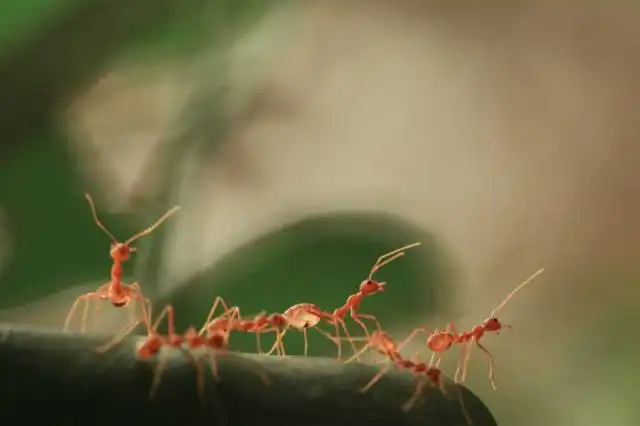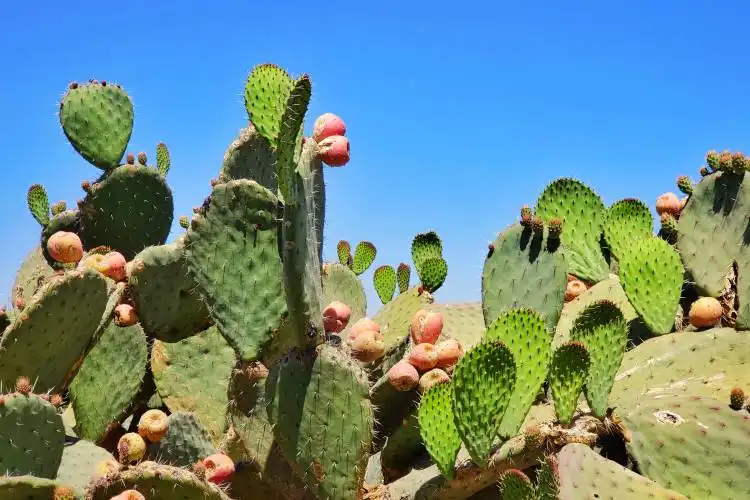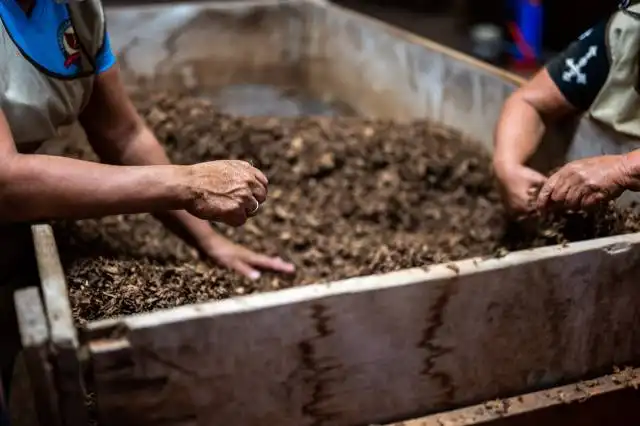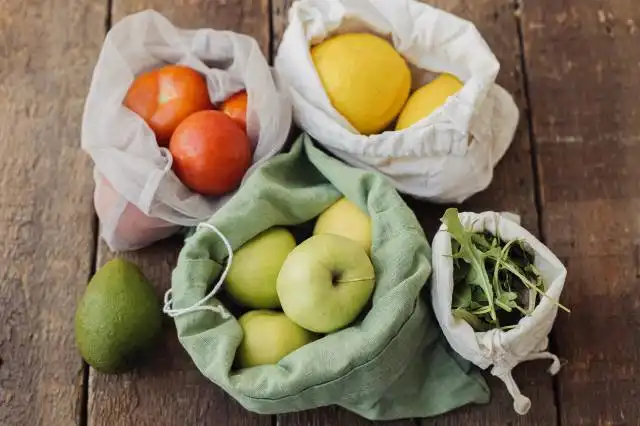Start a Hemp Farm
Hemp Farming: Harvest Your Green Thumb for a Greener Pocket
| Updated


HEMP FARM
Calling all green thumbs and aspiring entrepreneurs; have you considered diving into the burgeoning industry of hemp farming? This business is rooted in the cultivation of hemp, a versatile plant used in the creation of everything from clothing to CBD oil. As interest grows globally for eco-friendly products, stepping into hemp farming could just be your ticket to cultivating success in an exponentially blooming market. So, get your hands a little dirty and watch as your green crops turn into some serious green cash.
Jump to Business Plan
RELATED BUSINESS IDEAS
Browse ALL Sustainability & Eco-Friendly Initiatives Business Ideas
Discover Your Perfect Domain
Unlock the door to your online success with our hand-picked selection of premium domain names. Whether you're starting a new venture or rebranding an existing one, the right domain can set the tone for your digital presence. Browse through our curated list, each with its unique potential to enhance your brand's visibility and credibility.
HEMP FARM MINI BUSINESS PLAN
This a quick reality check to help you identify the strengths and weaknesses of your business concept before you dive in.
Expected Percent Margin:
- Gross Margin: 80-85%
- Net Profit Margin: 20-30%
Earnings Expectations:
- Daily Earnings: Hemp prices can vary, but let's estimate $10-$20 per pound. If you process the hemp as CBD oil, you may earn $200-$400 per pound.
- Weekly Earnings: Assuming you sell 50 pounds per week, that's $500-$1,000 for raw hemp or $10,000-$20,000 for processed CBD oil.
- Monthly Earnings: 200 pounds per month could fetch $2,000-$4,000 for raw hemp or $40,000-$80,000 for processed CBD oil.
- Annual Earnings: Annually, 2,400 pounds could gross $24,000-$48,000 for raw hemp and $480,000-$960,000 for processed CBD oil.
Actions to Hit Those Numbers:
Cultivation:
- Cultivation Expertise: Be aware of proper growing techniques, best cultivars for your location and potential pests.
- Farm Size: Begin with a few acres and scale up as you gain experience.
Processing:
- Processing Equipment: A significant investment ($5,000-$50,000 depending on the scale of operation).
- Post-Harvest Processes: Familiarize yourself with retting, decortication, and other post-harvest processes.
Sales and Marketing:
- Market Research: Research whether you'll primarily sell for fiber, seeds or CBD oil as each requires different harvesting and processing methods.
- Green Marketing: Emphasize the environmentally friendly benefits of hemp.
Legal and Compliance:
- License: Acquire the necessary agricultural licensing.
- Law Compliance: Ensure continuous compliance with the law including THC testing.
Financial Investment:
- Startup Costs: Included but not limited to land lease/purchase, planting, harvesting and processing equipment, staff and utilities.
- Operating Expenses: Follow a sustainable financial model to ensure your operating expenses do not exceed your potential earnings.
Remember, these figures are quite varied as multiple elements can affect earnings in the hemp industry: market demand, regulatory dynamics, competition, and crop yield.
NOT WHAT YOU HAD IN MIND? Here are more ideas



Browse ALL Sustainability & Eco-Friendly Initiatives Business Ideas
Grab Your Business Website Name
Before you get caught up in the whirlwind of setting up your business, invest in a domain name. It's a small but significant step that lays the foundation for your brand and makes it easier for customers to find and trust you. Just like you wouldn't build a house without securing the land first, don't build a business without securing your domain name.
"Why? Can't that wait?" Here's why it shouldn't
Step 1: Determine if Hemp Farming is the Right Endeavor
Breakdown of Startup Expenses
Starting a hemp farm requires a significant investment of both time and money. Before committing to the endeavor, it is important to understand the startup costs associated with the business. These costs may include land acquisition, seed and equipment purchases, and labor costs. Additionally, it is important to factor in the cost of any necessary permits and licenses. It is also important to consider the cost of insurance, which can help protect the business from any potential losses.
Breakdown of Ongoing Expenses
In addition to the startup costs, it is important to consider the ongoing expenses associated with running a hemp farm. These costs may include labor, fertilizer, and other supplies. Additionally, it is important to factor in the cost of marketing and advertising, as well as any other costs associated with running the business.
Examples of Ways to Make Money
There are a variety of ways to make money from a hemp farm. These include selling the hemp products directly to consumers, wholesaling the products to retailers, and processing the hemp into other products. Additionally, hemp can be used to create a variety of products, such as textiles, paper, and food products. It is also possible to use hemp to create biofuels and other renewable energy sources.
Step 2: Name the Business
When naming a business, it is important to consider the type of business and the goals of the business. For example, a hemp farm should have a name that reflects the values and mission of the business. It should also be memorable and easy to pronounce. Additionally, it is important to consider the domain name availability and trademarking. It is also important to consider the target audience and the type of impression the business name will make. For example, a business name that is too long or difficult to pronounce may not be the best choice. It is also important to consider the potential for growth and the ability to expand the business in the future. Finally, it is important to make sure the business name is unique and not already taken by another business.
Step 3: Obtain Licensing and Permits
Licensing Requirements
Before starting a hemp farm, it is important to understand the local and state licensing requirements. Depending on the state, there may be different requirements for obtaining a license to grow hemp. In some states, the Department of Agriculture will require a license to grow hemp. Other states may require a license from the Department of Natural Resources or the Department of Health. Additionally, some states may require a license from the Federal Drug Administration. It is important to research the specific requirements for the state in which the hemp farm will be located.
Permits Required
In addition to licensing requirements, it is important to understand the permits that may be required to start a hemp farm. Depending on the state, there may be different permits required for growing hemp. For example, some states may require a permit for water use, while others may require a permit for land use. Additionally, some states may require a permit for the use of pesticides or other chemicals. It is important to research the specific permits required for the state in which the hemp farm will be located.
Step 4: Find Land and Resources
Finding Land
When starting a hemp farm, it is important to find the right land for the business. This should include land that is suitable for the type of hemp that is being grown. It is important to research the climate and soil conditions of the land to ensure that it is suitable for the hemp crop. Additionally, it is important to research the local zoning laws and regulations to ensure that the land is suitable for a hemp farm. It is also important to consider the size of the land and the cost of the land when making a decision.
Resources Needed
Once the land has been found, it is important to determine the resources that are needed to start the hemp farm. This includes the equipment needed to cultivate the hemp, such as tractors, harvesters, and other tools. Additionally, it is important to consider the cost of the resources needed to start the farm. It is also important to consider the cost of labor and the cost of any materials that are needed to cultivate the hemp. Finally, it is important to consider the cost of any licenses or permits that are needed to legally operate the hemp farm.
Step 5: Purchase Equipment
When it comes to starting a hemp farm, there are certain pieces of equipment that are necessary in order to get the job done. This includes items such as tractors, planters, harvesters, and other tools. Depending on the size of the farm, the cost of equipment can range from a few thousand dollars to tens of thousands of dollars. It is important to research the different types of equipment available and determine which ones are the most cost-effective and efficient for the specific needs of the hemp farm. Additionally, it is important to consider the cost of maintenance and repairs for the equipment, as this can add up over time.
When it comes to the types of equipment needed, there are a few key pieces that are necessary for a successful hemp farm. This includes a tractor, planter, harvester, and other tools such as cultivators, tillers, and seeders. Depending on the size of the farm, additional pieces of equipment may be necessary, such as a baler or a combine. It is important to research the different types of equipment available and determine which ones are the most cost-effective and efficient for the specific needs of the hemp farm.
The cost of equipment can vary greatly depending on the size of the farm and the type of equipment needed. For a small farm, the cost of equipment can range from a few thousand dollars to tens of thousands of dollars. It is important to research the different types of equipment available and compare prices in order to get the best deal. Additionally, it is important to consider the cost of maintenance and repairs for the equipment, as this can add up over time.
When it comes to purchasing equipment, it is important to consider the cost of the equipment as well as the cost of maintenance and repairs. Additionally, it is important to research the different types of equipment available and compare prices in order to get the best deal. By taking the time to research and compare prices, farmers can ensure that they are getting the most cost-effective and efficient equipment for their hemp farm.
Step 6: Plant Hemp
Choosing the Right Variety
When choosing the right variety of hemp to plant, it is important to consider the climate, soil, and water conditions of the area. Different varieties of hemp may require different levels of water, sunlight, and soil nutrients. It is also important to consider the end use of the hemp, as some varieties are better suited for fiber, others for seed, and still others for medicinal purposes.
Planting and Care Instructions
Once the right variety of hemp has been chosen, it is time to begin planting. Hemp should be planted in well-drained soil in an area that receives plenty of sunlight. Hemp seeds should be planted at a depth of 1/2 inch and spaced 10-12 inches apart. After planting, hemp should be watered regularly and fertilized every few weeks. The plants should be monitored for pests and diseases, and any problems should be addressed immediately. Once the plants have reached maturity, they should be harvested and processed according to the desired end use.
Step 7: Harvest Hemp
Harvesting hemp is a labor-intensive process, but it is important to do it correctly in order to maximize the quality of the crop. The optimal time to harvest hemp is when the flowers are mature and the leaves are beginning to yellow. The best way to harvest the hemp is to cut the entire plant at the base and hang it upside down in a cool, dry place. Once the hemp has dried, it can be stored in a cool, dry place until it is ready to be processed.
Processing Hemp
Processing hemp is the next step in the process of starting a hemp farm. Processing hemp involves removing the flowers and leaves from the stalk and then drying them further. The flowers and leaves can then be used to make a variety of products such as hemp oil, hemp seed, and hemp fiber. Processing hemp can be done by hand or with specialized machinery.
Selling Hemp Products
Once the hemp has been processed, it is time to start selling the products. Hemp products can be sold in a variety of ways, including online, at farmers markets, and in retail stores. It is important to research the different markets and determine which ones will be the most profitable. Additionally, it is important to understand the regulations and laws that govern the sale of hemp products in order to ensure compliance.
Final Steps
The final steps in starting a hemp farm include marketing the products, managing the finances, and ensuring compliance with all applicable laws and regulations. Marketing the products can be done through online advertising, social media, and traditional advertising. Additionally, it is important to keep track of the finances in order to ensure that the business is profitable. Finally, it is important to stay up to date on all applicable laws and regulations in order to ensure that the business is operating legally.
Step 8: Market and Sell Hemp
Finding Buyers
Once the hemp farm is up and running, the next step is to find buyers. This can be done through a variety of methods, such as attending trade shows, networking with other hemp farmers, and advertising online. Additionally, it is important to research the market to determine the best price for the hemp.
Pricing Hemp
When pricing the hemp, it is important to consider the cost of production, the current market price, and the demand for the hemp. Additionally, it is important to consider the cost of shipping and any taxes or fees that may be associated with selling the hemp. It is also important to consider the cost of packaging and labeling the hemp, as this can affect the overall price. Once the price is determined, it is important to ensure that it is competitive with other hemp farmers in the area.
Step 9: Manage Finances
Tracking Income and Expenses
Tracking income and expenses is essential for any business, and a hemp farm is no different. It is important to keep track of all income and expenses related to the business, including sales, purchases, and other costs. This will help you to better understand your financial situation and make informed decisions about the future of the business. Additionally, tracking income and expenses can help you to identify areas where you can save money or increase profits.
Tax Considerations
Tax considerations are an important part of running a hemp farm. It is important to understand the tax implications of running a business, as well as any deductions or credits that may apply. Additionally, it is important to understand the tax implications of any investments you make in the business, such as equipment or land purchases. It is also important to understand the tax implications of any profits you make from the business, as well as any losses you may incur. Finally, it is important to understand the tax implications of any employees you hire, as well as any other third-party services you may use.
EXPLORE MORE CATEGORIES
Browse ALL Business Idea Categories
TAKE THE NEXT STEPS










